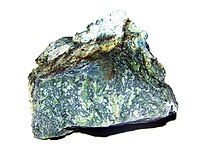
Assessment of TDDFT- and CIS-based methods for calculating fluorescence spectra of (dibenzoylmethanato)boron difluoride exciplexes with aromatic hydrocarbons
Sign Up to like & getrecommendations! Published in 2017 at "Journal of Molecular Modeling"
DOI: 10.1007/s00894-017-3341-9
Abstract: The applicabilities of various CIS- and TDDFT-based procedures to the calculation of the fluorescence spectra of DBMBF2 exciplexes with aromatic hydrocarbons are analyzed. It is shown that a reasonable agreement between the calculated and experimental… read more here.
Keywords: cis; exciplexes aromatic; fluorescence; fluorescence spectra ... See more keywords

A novel algorithm for resolution of three-component mixtures of fluorophores by fluorescence quenching
Sign Up to like & getrecommendations! Published in 2017 at "Chemometrics and Intelligent Laboratory Systems"
DOI: 10.1016/j.chemolab.2016.10.017
Abstract: Abstract The article presents a new algorithm for resolving the fluorescence spectra of three-component systems. The proposed method refers to a technique already known in the literature combining self-modeling based on singular value decomposition with… read more here.
Keywords: component; fluorescence; fluorescence spectra; three component ... See more keywords

Fluorescence spectroscopy for discrimination of botrytized wines
Sign Up to like & getrecommendations! Published in 2018 at "Food Control"
DOI: 10.1016/j.foodcont.2017.12.033
Abstract: Abstract Some botrytized wines with “protected designation of origin” have a high market price, thus they are prone to adulteration with cheaper alternatives. This work presents the use of fluorescence spectroscopy combined with chemometrics as… read more here.
Keywords: botrytized wines; fluorescence spectroscopy; fluorescence; fluorescence spectra ... See more keywords

Fluorescence spectra of nutrients in chicken and skin under baking conditions
Sign Up to like & getrecommendations! Published in 2020 at "Optik"
DOI: 10.1016/j.ijleo.2020.164795
Abstract: Abstract The chicken and skin were studied by fluorescence spectroscopy. The three-dimensional fluorescence spectra of chicken and skin were measured, It was concluded that the optimal excitation wavelength corresponding to the fluorescence peak of 330 nm… read more here.
Keywords: fluorescence; fluorescence spectra; chicken skin; chicken ... See more keywords

Feature Selection Assists BLSTM for the Ultrasensitive Detection of Bioflavonoids in Different Biological Matrices Based on the 3D Fluorescence Spectra of Gold Nanoclusters.
Sign Up to like & getrecommendations! Published in 2022 at "Analytical chemistry"
DOI: 10.1021/acs.analchem.2c03814
Abstract: Rapid and on-site qualitative and quantitative analysis of small molecules (including bioflavonoids) in biofluids are of great importance in biomedical applications. Herein, we have developed two deep learning models based on the 3D fluorescence spectra… read more here.
Keywords: gold nanoclusters; analysis; fluorescence spectra; model ... See more keywords

Photochemistry Illuminates Ubiquitous Organic Matter Fluorescence Spectra.
Sign Up to like & getrecommendations! Published in 2018 at "Environmental science & technology"
DOI: 10.1021/acs.est.8b02648
Abstract: Dissolved organic matter (DOM) in aquatic environments forms a vast reservoir of carbon present as a complex supermixture of compounds. An efficient approach to tracking the production and removal of specific DOM fractions is needed… read more here.
Keywords: dom; fluorescence; photochemistry illuminates; fluorescence spectra ... See more keywords

Fluorescence Spectra Predict Microcystin-LR and Disinfection Byproduct Formation Potential in Lake Water.
Sign Up to like & getrecommendations! Published in 2019 at "Environmental science & technology"
DOI: 10.1021/acs.est.8b04139
Abstract: Disinfection byproducts (DBPs) and algal toxins can be expensive to monitor and represent significant potential risks to human health. DBPs, including haloacetic acids and trihalomethanes, are possible or probable human carcinogens. Microcystin-LR-produced by cyanobacteria-is linked… read more here.
Keywords: fluorescence; water; fluorescence spectra; microcystin ... See more keywords

Analysis of Fluorescence Spectra of Citrus Polymethoxylated Flavones and Their Incorporation into Mammalian Cells.
Sign Up to like & getrecommendations! Published in 2018 at "Journal of agricultural and food chemistry"
DOI: 10.1021/acs.jafc.8b02052
Abstract: Citrus polymethoxylated flavones (PMFs) influence biochemical cascades in human diseases, yet little is known about how these compounds interact with cells and how these associations influence the actions of these compounds. An innate attribute of… read more here.
Keywords: polymethoxylated flavones; analysis fluorescence; fluorescence; citrus polymethoxylated ... See more keywords

Rapid determination of flavonoids in green tea by synchronous fluorescence spectra coupled with chemometrics
Sign Up to like & getrecommendations! Published in 2017 at "Spectroscopy Letters"
DOI: 10.1080/00387010.2017.1368028
Abstract: ABSTRACT Flavonoids are one of the most important antioxidant compounds of tea. It is necessary to determine flavonoid concentration of tea infusions and to understand how the storage condition and tea brewing processing impact on… read more here.
Keywords: coupled chemometrics; synchronous fluorescence; determination; spectra coupled ... See more keywords

Tutorial: Measurement of fluorescence spectra and determination of relative fluorescence quantum yields of transparent samples.
Sign Up to like & getrecommendations! Published in 2020 at "Methods and applications in fluorescence"
DOI: 10.1088/2050-6120/ab7e10
Abstract: The measurement of fluorescence spectra and the determination of fluorescence quantum yields in transparent samples are conceptually simple tasks, but these procedures are subject to several pitfalls that can lead to significant errors. Available technical… read more here.
Keywords: measurement fluorescence; fluorescence; fluorescence spectra; fluorescence quantum ... See more keywords

Database of Absorption and Fluorescence Spectra of >300 Common Compounds for use in PhotochemCAD
Sign Up to like & getrecommendations! Published in 2018 at "Photochemistry and Photobiology"
DOI: 10.1111/php.12860
Abstract: The design of new molecules for photochemical studies typically requires knowledge of spectral features of pertinent chromophores beginning with the absorption spectrum (λabs) and accompanying molar absorption coefficient (ε, m−1 cm−1) and often extending to… read more here.
Keywords: absorption; fluorescence; spectra 300; fluorescence spectra ... See more keywords